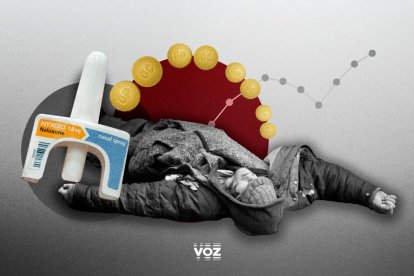The exorbitant cost of the opioid epidemic
In 2023 alone, illicit opioids - primarily fentanyl - cost Americans approximately $2.7 trillion (in December 2024 dollars), equivalent to 9.7% of GDP.

The opioid epidemic has left a huge toll not only socially but also economically on the country. A White House report revealed what they represent for taxpayers and the damages generated by these substances.
In this regard, the government explained that fentanyl, a synthetic opioid 50 times more potent than heroin, is cheaper to produce and easier to smuggle across borders. This, the White House believes, fuels the country's illicit opioid epidemic.
In 2023 alone, illicit opioids - primarily fentanyl - cost Americans approximately $2.7 trillion (in December 2024 dollars), equivalent to 9.7% of GDP. Of this total cost, 41% ($1.1 trillion) is attributed to deaths, 49% ($1.34 trillion) to loss of quality of life, and 10% ($277 billion) to other costs such as medical care, reduced labor productivity, and crime-related expenses.
"Alarmingly, 93 percent of opioid deaths are caused by powerful synthetic opioids like fentanyl, which typically originate in China and are trafficked through Mexico," the White House explained in its report.
The Council of Economic Advisers previously conducted a study on this issue and came up with a lower figure. The main reasons are that it did not include the cost of reduced quality of life and that the number of deaths in 2015 was 33,000, the current government detailed.
"Our cost estimates are based on a 2017 CDC study which we have updated to account for inflation and the sharp rise in opioid deaths and opioid use disorder (OUD) since then." the White House highlighted.
Similarly, the study indicated that loss of life estimates were increased based on the increase in deaths, while the other estimates are adjusted to reflect the increase in the prevalence of people living with opioid use disorder (OUD).
Based on the data, the cost estimate for loss of life was $1.11 trillion. To arrive at this estimate, the government multiplied the number of lives lost (74,702) by the statistical value of life in the country and added the productivity and medical care costs resulting from opioid deaths.
“Human suffering is unsustainable”
It further adjusted for inflation the $10.1 million value of a statistical figure of lives provided by NIH (2017) to 2025 dollars ($13 million per life).
Meanwhile, the loss of quality of life due to opioids was placed at $1.34 billion. The estimate was based on three factors. The first is a survey-derived measure of the diminished quality of life for people with opioid use disorder (OUD) compared with those in good health.
This measure reveals that living with OUD accounts for approximately 60% (0.626) of the quality of life of healthy people.
The second is a measure that determines how much Americans value a year of living in good health. Adjusted for inflation, this value was calculated at $624,410 per person per year. Combined, these values indicated that the loss of quality of life costs $234,478 per year per person living with OUD. Subsequently, this figure was multiplied by the prevalence of OUD, which was estimated to be 5.7 million by 2023.
Health system and crime
In the Health System, spending was $107 billion. The estimate represents the additional annual costs generated by the health system for treating people with opioid use disorder (OUD) compared to the average annual cost of treating non-opioid users. This equates to an additional $19,000 per year per person with OUD.
The costs were borne primarily by private insurers, Medicaid, and hospitals that provide uncompensated care. Ultimately, these costs are passed on to all Americans through increased insurance premiums, taxes, and health care expenses.
As for lost labor productivity, the cost was $107 billion. The estimate was calculated by multiplying the number of productive work hours lost due to opioid-related deaths, TUD and incarceration by the average total hourly compensation (wages and benefits) of workers.
Finally, crime had a cost of $63 billion. The amount represents the sum of costs generated by additional police protection, judicial activities, correctional facilities, and material losses from opioid-related crime.
RECOMMENDATION





















